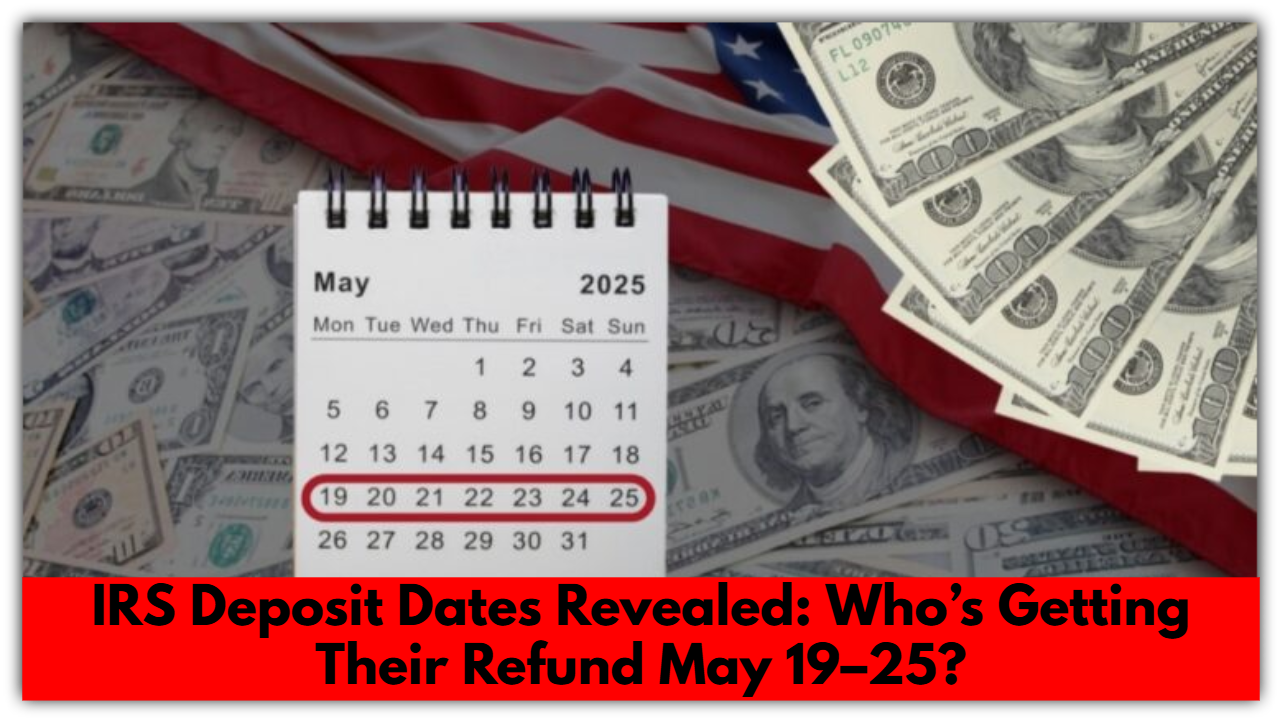IRS Deposit Dates Revealed: Who’s Getting Their Refund May 19–25?
So—you filed your taxes, chose direct deposit, and now you’re checking your bank account like it owes you money (because it kind of does). If you’re wondering whether your tax refund is supposed to hit between May 19 and May 25, you’re not alone. A lot of folks are asking the same question right now.
Let’s make sense of it.
Here’s Who Should See Their Refund This Week
If the IRS accepted your return in late April or early May, there’s a decent chance that refund could be landing in your account sometime this week.
Based on how the IRS typically schedules direct deposits, here’s a rough idea of what the timing looks like:
-
Filed April 28? Look out for your money around May 19
-
Filed April 29? Probably May 20
-
Filed April 30? Likely May 21
-
Filed May 1? Could be May 22
-
Filed May 2? Watch for it on May 23
-
Filed May 3 or 4? You might get it May 24 or 25
This isn’t a guaranteed schedule, but it’s based on the usual 21-day processing timeline for people who e-filed and picked direct deposit.

But What If It’s Not There Yet?
Still waiting? Don’t stress—there are a few pretty normal reasons your refund might be running late:
-
Small errors slow things down.
A typo in your name, bank info, or even a mismatched number can delay the whole thing. -
Certain tax credits take longer to process.
If you claimed the Earned Income Tax Credit or Additional Child Tax Credit, the IRS takes extra steps to review it. That means longer wait times. -
You mailed your return.
If you sent in a paper return (instead of filing online), it’s going to take a lot longer. Like, weeks longer. -
Your bank might just be taking its time.
Even if the IRS sends the refund, it can take a day or two for your bank to actually post the money to your account.
Want to Check Your Refund?
Instead of refreshing your banking app every 10 minutes (we’ve all been there), try the IRS’s “Where’s My Refund?” tool. It gives you a personalized update based on your info, and it’s super easy to use.
You’ll need:
-
Your Social Security Number (or ITIN)
-
Your filing status (like Single, Married Filing Jointly, etc.)
-
The exact amount of your refund
Check it out at irs.gov/refunds, or grab the IRS2Go app to track it on your phone.
It updates once a day, usually overnight, so don’t worry if it doesn’t change by the hour.
If your return was accepted between April 28 and May 4, this might be your week. Keep an eye on your account, and if you don’t see anything after 21 days, it’s totally okay to follow up with the IRS.
And hey—once the money lands, maybe take a deep breath, pay off a bill, or treat yourself to something small. You’ve earned it.


Comments are closed, but trackbacks and pingbacks are open.